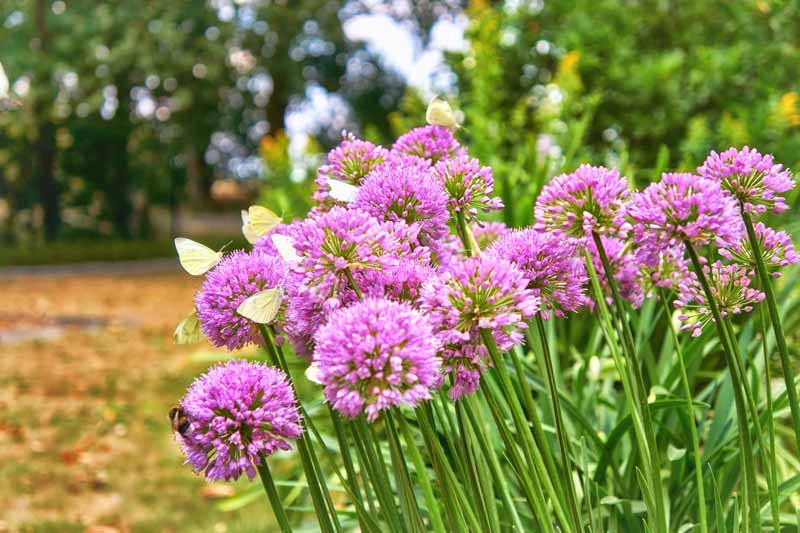Seasonal Agapanthus Care: Getting Ready For Winter Season and Summer
Releasing the Secret to Effective Agapanthus Cultivation: Idea for a Flourishing Yard
In the world of gardening, cultivating agapanthus efficiently needs a tactical approach that incorporates different facets of plant treatment. By comprehending the nuances of agapanthus farming, one can develop a setting where these plants grow and bloom perfectly.
Growing Agapanthus: Best Practices
When growing Agapanthus, proper dirt preparation is important for ensuring effective growth and advancement of these gorgeous blossoms. Agapanthus, typically referred to as Lily of the Nile or African lily, prospers in well-draining dirt with a slightly acidic to neutral pH degree - Agapanthus. Before growing, it is essential to modify heavy clay soils with natural matter such as garden compost or peat moss to improve drain and provide necessary nutrients for the plants
To grow Agapanthus, select an area that receives full sunshine to partial shade, as this will certainly promote healthy and balanced growth and plentiful blooming. Dig an opening twice the diameter of the plant's origin sphere and position the Agapanthus at the same depth it was formerly expanding. Gently backfill the opening with dirt, weighing down firmly to eliminate any kind of air pockets around the roots.
Water the recently grown Agapanthus extensively and continue to keep the soil uniformly wet, especially during the plant's active expanding period. Agapanthus. Using a well balanced fertilizer once a month can even more support the plant's development and blooming. By adhering to these best practices for planting Agapanthus, you can produce a sensational display screen of these captivating flowers in your garden
Suitable Soil Conditions for Agapanthus
For optimum development and flowering success of Agapanthus plants, guaranteeing the soil problems are ideal is crucial. Agapanthus favors dirt that is rich in nutrients, so incorporating a well balanced plant food during the growing period can promote healthy development and lively flowers.

Watering and Fertilizing Tips
To make certain healthy and balanced growth and dynamic blooms, proper watering and feeding strategies are necessary for successful Agapanthus cultivation. Agapanthus plants profit from normal watering, particularly during the growing period.
When it pertains to fertilizing Agapanthus, a balanced plant food with equivalent parts nitrogen, phosphorus, and potassium can be used in the springtime to promote healthy and balanced development and flowering. Slow-release plant foods are excellent for offering nutrients progressively over a prolonged duration. Stay clear of over-fertilizing, as this can cause extreme foliage development at the cost of blooms.
In addition, integrating organic issue like compost right into the dirt can enhance nutrient degrees and improve dirt structure, assisting in the general health of the Agapanthus plants. By complying with these watering and fertilizing pointers, gardeners can guarantee their Agapanthus plants flourish and generate sensational displays of blossoms.
Pruning and Deadheading Strategies
Appropriate trimming and deadheading methods play an essential duty in maintaining the wellness and aesthetic appeals of Agapanthus plants, moved here enhancing the vital techniques of watering and fertilizing for effective cultivation. Pruning Agapanthus entails removing spent blossom heads, yellowing or dead leaves, and overall shaping of the plant to advertise better growth. Deadheading, the procedure of removing faded blossoms, not just enhances the plant's appearance yet also encourages additional growing.
When deadheading Agapanthus, it is recommended to clip off the blossom stem at the base using sharp, clean shears. This process reroutes the plant's power from seed manufacturing back into root and foliage development, advertising a much healthier and much more robust plant. Routine deadheading can expand the growing period of Agapanthus and avoid self-seeding, which can cause congestion.
In regards to trimming, Agapanthus usually gain from a light trim after flowering to clean the plant and urge fresh development. Reducing back the invested blossom stems and eliminating any type of dead or broken foliage helps maintain the plant's vigor and total look. Nonetheless, it is necessary to avoid reducing right into the crown of the plant, my blog as this can deteriorate its health and wellness.

Protecting Agapanthus From Pests and Diseases
Implementing reliable bug and illness management approaches is critical to securing the health and vigor of Agapanthus plants in growing. Agapanthus are typically durable plants, yet they can still fall victim to numerous insects and conditions otherwise properly looked after. One common insect that influences Agapanthus is the Agapanthus borer, a caterpillar that tunnels into the plant, creating damages to the fallen leaves and blossoms. To prevent invasions, regular examination of the plants is vital. If borers are spotted, they can be by hand removed, or insecticidal soap can be utilized as a control measure.
In enhancement to bugs, Agapanthus are Going Here prone to illness such as root rot and fungal leaf places. By remaining cautious and resolving bug and illness problems quickly, gardeners can aid their Agapanthus grow and flourish.

Final Thought
Finally, successful farming of agapanthus needs correct planting methods, ideal soil problems, adequate watering and fertilizing, normal pruning and deadheading, and security from illness and parasites. By following these ideas and methods, garden enthusiasts can guarantee a prospering garden full of beautiful agapanthus blossoms. Agapanthus. Remember to maintain constant care and attention to information to advertise the wellness and longevity of these stunning plants
When planting Agapanthus, appropriate soil prep work is necessary for making certain successful growth and development of these gorgeous flowers.Water the recently planted Agapanthus completely and continue to keep the soil uniformly damp, particularly during the plant's active growing season.For optimal growth and blooming success of Agapanthus plants, ensuring the dirt problems are ideal is crucial. When planting or hair transplanting Agapanthus, make sure the dirt is well-prepared to supply the required foundation for the plants to establish themselves successfully. One usual parasite that impacts Agapanthus is the Agapanthus borer, a caterpillar that tunnels into the plant, causing damages to the fallen leaves and flowers.